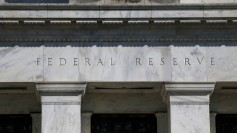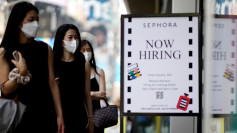The U.S. economy added 151,000 jobs in February, falling short of economists' expectations as the unemployment rate edged up to 4.1%, according to data released Friday by the Bureau of Labor Statistics. The job gains were higher than January's revised figure of 125,000 but below the 170,000 projected by analysts.
The labor market report reflected a mix of expansion and contraction across industries, with private sector hiring offsetting a sharp decline in federal government employment. The Department of Government Efficiency (DOGE), led by Elon Musk, eliminated 10,000 federal jobs last month as part of a broader effort to cut government spending.
"We know that over the next three to six months, we're going to see some of the disruptive effects in Washington start to show up in both the economy and in the labor market," said Joe Brusuelas, chief economist at RSM. "But for now, what this tells us is that we really only need to add about 100,000 to 150,000 jobs a month to keep employment stable. That's exactly what happened."
Health care employers added 52,000 jobs, while financial services firms and transportation companies contributed 21,000 and 18,000 new positions, respectively. Retailers, however, shed 6,000 jobs, with major companies such as Walmart and Best Buy warning of potential cost pressures from President Donald Trump's new tariff policies.
Average hourly earnings rose 0.3% for the month and 4% from the previous year, down slightly from January's 4.1% annual growth. The labor force participation rate also dipped to 62.4% from 62.6% in the prior month.
Federal job losses marked a significant shift, as government payrolls had not declined since June 2022. The broader impact of Musk's cost-cutting measures remains uncertain, but Wall Street firms have estimated total job losses from DOGE reforms could reach 500,000. Barclays analysts, however, suggested that federal employment accounts for just 1.5% of total U.S. jobs, limiting the overall economic effect.
Investor sentiment toward the labor market remained mixed, with markets reacting mildly to the report. The Nasdaq Composite entered correction territory on Thursday, while the S&P 500 closed at its lowest level of the year. Traders continue to anticipate three Federal Reserve rate cuts in 2024, although expectations have fluctuated in recent weeks.
Economic uncertainty has intensified under the Trump administration's policy shifts, including aggressive tariffs and reduced immigration, both of which could further impact labor market growth. "It's not just tariffs we're contending with but also slower immigration," said Sarah House, senior economist at Wells Fargo. "That's going to affect labor force growth, and then we now have pretty aggressive efforts to curtail government spending."
Consumer confidence has also weakened as households shift toward saving over spending, while the White House's evolving tariff strategy has raised concerns over inflation. In response, major retailers have indicated that they may pass additional costs onto consumers.
Private sector reports released earlier in the week suggested a slowing labor market. ADP's February payroll data showed a gain of just 77,000 jobs, well below forecasts. Meanwhile, job cut announcements reached their highest level since mid-2020, according to Challenger, Gray & Christmas. The number of part-time workers seeking full-time employment surged by 460,000 to 4.9 million, the highest since the pandemic.
While the labor market remains resilient, signs of cooling are becoming more evident. "There were fears that today's jobs report would reveal some deeply unsettling news around the health of the labor market," said Seema Shah, chief global strategist at Principal Asset Management. "Yet, while the worst fears were not met, the report does confirm that the labor market is cooling."






